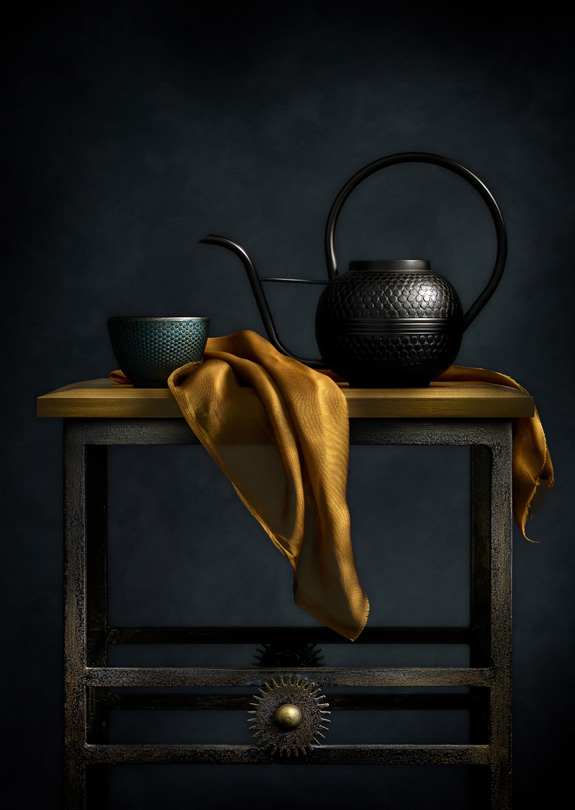teiladay
Member
- Joined
- Sep 16, 2009
- Messages
- 14
PARA: If I were looking for my first modifier today, I think I would choose a para first because I find a para to be more versatile over a softbox. Frankly today, I most likely wouldn't bother with a softbox, as it's too easy for a para to pull that duty - a bed sheet can cheap and effective (though hideous looking draped over your para), but if you want to get really selective, you can find whatever diffusion material fits your liking best at nearest fabric/sewing store and cut it to size, where it fits onto the para nice-and-neat. Some manufacturers actually make diffusion material to fit onto their paras, but hell will freeze and turn to ice cream before I spend money on diffusion material from, say, Broncolor, when I can get the same result using cheap fabric from a fabric/sewing shop or from my own linen closet. I don't like spending money when money doesn't need to be spent. If Parabolix offers diffusion fabric at a reasonable price, then that may be a better solution than spending time doing it yourself.
POWER: Yes, the position of the strobe makes a difference, but please be very aware that how much power you send to your strobe and through a respective modifier can also make a HUGE difference! Some strobes and power packs have a very wide power range; a lot of power when the pack is turned up high, and very, very little power when the pack is set to extremely low power, which can also come in handy. The larger the para in relation to the subject, the more of a "soft specular" look one can achieve. There's a reason the larger paras are said to have a "hard, but soft kind of light."
MODELING LIGHT: Please be cognizant that modeling lights come in different types. Some have a step-less power range, allowing the photographer to go from a soft low glow at low power, to a blinding white light at full power, fully 'dimmable' without having to deal with specific power settings (e.g. 1-10 for example) The dimmable modeling lights on my old Bowens strobes (Model: Bowens Esprit; 500ws) can create the soft warm candle-light looking glow that I like... they also get hot enough to bake a cake. Conversely, my small Broncolor strobes that I use today (Model: MobiLED) are white/daylight LED modeling lights and the power cannot be adjusted.. they're either on or off, 30w LEDs, about the equiv. of a 100w bulb, and stay pretty cool. The modeling light(s) in my ringflash (200w Halogen lights) emit a warm glow...
If you're stopped down to F10 and you're shooting handheld, then you're probably not going to get much out of the modeling light as an actual useful 'light'. However, if you're shooting from tripod/camera stand at slow shutter speeds, the modeling light(s) + ambient lighting can offer aesthetic options that you might not have otherwise considered, or which may not have been available to you when hand-holding the camera (due to needing faster shutter speeds).
POWER: Yes, the position of the strobe makes a difference, but please be very aware that how much power you send to your strobe and through a respective modifier can also make a HUGE difference! Some strobes and power packs have a very wide power range; a lot of power when the pack is turned up high, and very, very little power when the pack is set to extremely low power, which can also come in handy. The larger the para in relation to the subject, the more of a "soft specular" look one can achieve. There's a reason the larger paras are said to have a "hard, but soft kind of light."
MODELING LIGHT: Please be cognizant that modeling lights come in different types. Some have a step-less power range, allowing the photographer to go from a soft low glow at low power, to a blinding white light at full power, fully 'dimmable' without having to deal with specific power settings (e.g. 1-10 for example) The dimmable modeling lights on my old Bowens strobes (Model: Bowens Esprit; 500ws) can create the soft warm candle-light looking glow that I like... they also get hot enough to bake a cake. Conversely, my small Broncolor strobes that I use today (Model: MobiLED) are white/daylight LED modeling lights and the power cannot be adjusted.. they're either on or off, 30w LEDs, about the equiv. of a 100w bulb, and stay pretty cool. The modeling light(s) in my ringflash (200w Halogen lights) emit a warm glow...
If you're stopped down to F10 and you're shooting handheld, then you're probably not going to get much out of the modeling light as an actual useful 'light'. However, if you're shooting from tripod/camera stand at slow shutter speeds, the modeling light(s) + ambient lighting can offer aesthetic options that you might not have otherwise considered, or which may not have been available to you when hand-holding the camera (due to needing faster shutter speeds).
